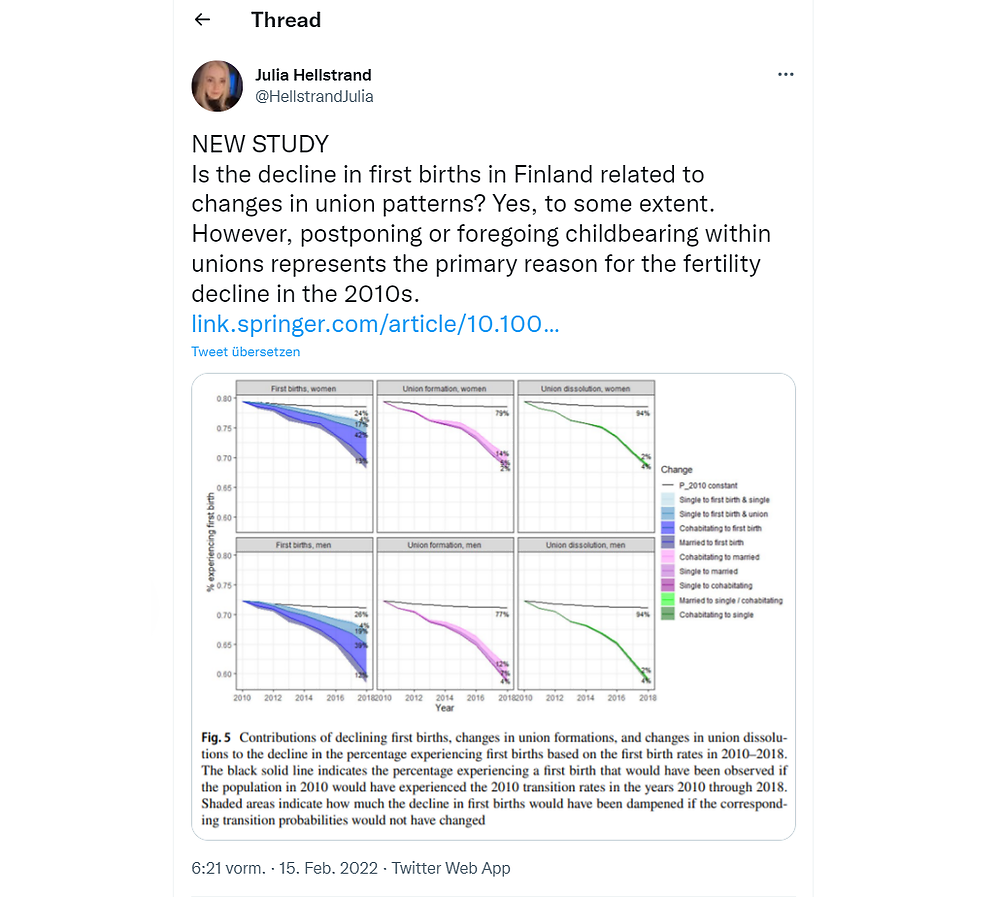February 16, 2022 | News | New Publication
Fertility in Finland: Less Partnering, Less Children, or Both?

© iStockphoto.com/Everste
A team including MPIDR Researchers investigated changes in the union – first birth dynamics from 2000 through 2018 in Finland. The researchers observed a lower fertility in unions after 2010, a long-term decline in marriage rates and increasing dissolution rates among cohabiting couples.
In the 2010s, fertility has declined in the Nordic countries, most strikingly in Finland, and first births drive the decline. It remains unclear whether this decline results from decreased fertility within unions, changing union dynamics, or both. Thus, a team including Julia Hellstrand from the University of Helsinki, Jessica Nisén from the University of Turku and Mikko Myrskylä, Director at the Max Planck Institute for Demographic Research in Rostock investigated changes in the union – first birth dynamics from 2000 through 2018 in Finland.
They used full-coverage population register data and an incidence-based multistate model. The researchers observed a lower fertility in unions after 2010, a long-term decline in marriage rates and increasing dissolution rates among cohabiting couples. Their findings were recently published in the European Journal of Population.
The researchers used counterfactual simulations to show that changing union dynamics provide a partial explanation, but postponing or foregoing fertility within unions represents the primary reason for the fertility decline.
Julia Hellstrand explains her findings on Twitter

Read the whole thread on Twitter.
Original Publication
Hellstrand, J., Nisén, J., Myrskylä, M.: Less Partnering, Less Children, or Both? Analysis of the Drivers of First Birth Decline in Finland Since 2010. European Journal of Population (2022). DOI: 10.1007/s10680-022-09605-8
Authors and Affiliations
Julia Hellstrand, University of Helsinki
Jessica Nisén, University of Turku
Mikko Myrskylä, Max Planck Institute for Demographic Research, Rostock